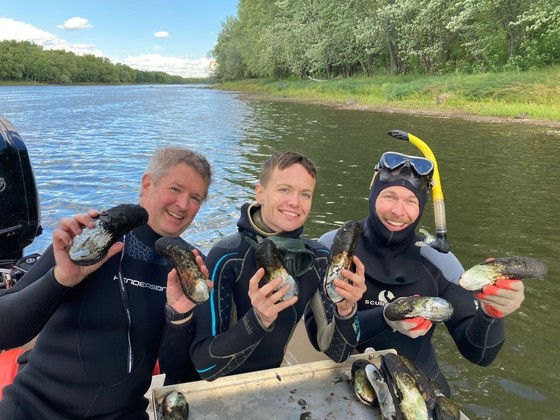Students And Volunteers Help Place Hatchery-Raised Mussels In Rivers
WDNR Press Release
Contact: Lisie Kitchel, DNR Conservation Biologist
Lisie.Kitchel@wisconsin.gov or 608-266-5248
Jesse Weinzinger, DNR Conservation Biologist
Jesse.Weinzinger@wisconsin.gov; 608-397-0198
The DNR teamed up with partners across Wisconsin to deliver and place more than 1,200 hatchery-raised mussels in several Wisconsin rivers where past water quality problems had taken a toll on mussel populations.
“Propagation and reintroduction are a useful conservation strategy to increase the abundance and distribution of native mussel populations,” said Weinzinger. “We’re thankful for the partnerships that made it possible to augment mussel populations in these streams and provide research going forward to help us shape recovery efforts.”
Weinzinger said that Genoa National Fish Hatchery raised thousands of fatmuckets (Lampsilis siliquoidea) as part of an experiment to research optimum water quality parameters and feeding rates for best survival.
University of Wisconsin-Stevens Point students worked with the DNR conservation biologists to place over 700 mussels at two streams in Portage County to monitor the growth and survivorship of the animals. Results from this student-led project will help determine the feasibility for future reintroduction efforts.
In southern Wisconsin, DNR partnered with the Upper Sugar River Watershed Association to place an additional 500 fatmuckets into the Sugar River to augment existing populations.
To learn more about how the DNR and our partners work to conserve our native mussels, visit the DNR’s Wisconsin Mussel Monitoring Program webpage. Read the Clam Chronicle newsletter to see how the DNR works with volunteers to build projects, programs, and tools for citizen-based monitoring efforts.

